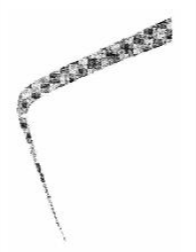The CJEU has rendered its decision on the invalidity actions brought by Yokohama against the below shape mark filed by Pirelli. The mark represents a single groove of a tyre tread, covering “tyres, solid, semi-pneumatic and pneumatic tyres, rims and covers for vehicle wheels of all kinds, vehicle wheels of all kinds, inner tubes, wheel rims, parts, accessories and spare parts for vehicle wheels of all kinds“ in class 12.

Background
In 2012, Yokohama filed an invalidity action against Pirelli’s mark based on the argument that the mark represents exclusively a shape which is necessary to obtain a technical result according to Article 7(1)(e)(ii) of the EU trademark Regulation.
The EUIPO declared the mark invalid, based on the consideration that the mark forms an integral part of a tyre tread, and, thus, the shape is solely dictated by its technical function.
In response, Pirelli filed an appeal and argued that the shape concerned did not have a technical function, as it is a part of a tyre tread and, together with other elements, forms the tyre as a whole. The General Court decided in Pirelli’s favour and the CJEU has now uphold the decision.
Technical function?
The CJEU found that the shape did not achieve a technical result and the EUIPO had unlawfully added elements to the shape that did not form part of it, when declaring the mark invalid.
The EUIPO might consider the nature of the sign, but it went one step too far by adding external characteristics to the sign that usually appear on tyre treads to establish what the mark represents. In fact, the sign, a single groove in a tyre tread, does not represent a significant part of a tyre tread and, as a result, it could not achieve a technical result.
The CJEU highlighted that, in any event, Pirelli’s mark will have a limited scope of protection, as it does not give Pirelli the right to prevent competitors from making tyres incorporating the mark or similar parts into a tyre with a different overall shape.
Conclusion
The case provides some useful guidance on the registrability of shape marks, in particular shapes that are part of a complex product. Clearly, shape marks should be examined in light of the representations actually filed rather than the use that the applicant can make of the sign itself. Therefore, trademark owners should consider representations of complex products carefully if they wish to obtain a broad scope of protection.
Sophie Verstraeten also contributed to this article.




 />i
/>i

